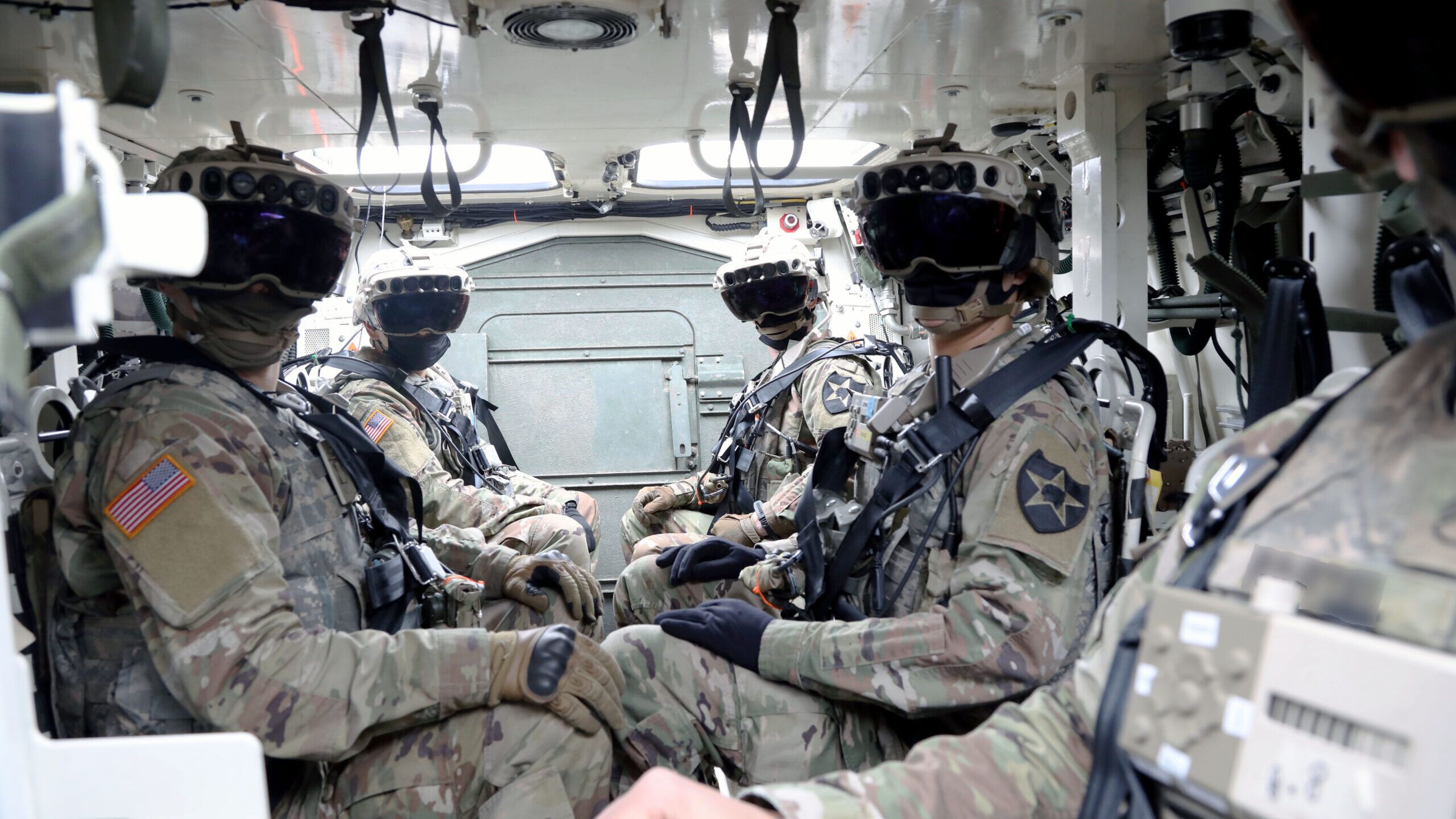
Soldiers don the Integrated Visual Augmentation System Capability Set 3 hardware while mounted in a Stryker in Joint Base Lewis-McCord, WA. (Courtney Bacon/US Army)
Updated March 30, 2022 at 2:32pm ET: The Army corrected the amount of money it wants to spend on the Future Long Range Reconnaissance Aircraft and Future Attack Reconnaissance Aircraft. This report has been updated to reflect the new numbers.
WASHINGTON: The US Army is asking Congress for about $400 million in procurement funds in its fiscal 2023 budget for the Integrated Visual Augmentation System, a reduction of more than half of last year’s $854 million request. The figure amounts to a piece of the $12.6 billion requested for the Army’s 35 signature modernization programs.
Brig. Gen. Michael McCurry, director of force development for the Army G-8, told reporters Tuesday that the service was asking for $462 million for IVAS, including $62 million in research, development, test and evaluation dollars. The procurement figure would buy “just over” 7,000 IVAS goggles for three brigade combat teams, he said, assuming that the system passes its initial operational test in May. The Army also plans to buy 270 of the newer “1.2” prototype version of the high-tech goggles with the RDT&E funds.
Technical glitches ahead of IOT&E last year delayed fielding of IVAS by several months and prompted Congress to cut $349 million in funding.
While the troubled IVAS initiative powers through, Kristen Taylor, director of investments for the Army Budget Office, said the Army was not requesting funding for a different high-tech headset, the Enhanced Night Vision Goggles-Binoculars, a technology the Army was highlighting as recently as the start of this month.
Taylor said the overall funding for the Army’ 31+4 priority signature modernization priorities totaled $12.6 billion. Top service leaders have pegged FY23 as a key year for its signature modernization portfolio with 24 of the 31+4 scheduled to be in prototyping.
RELATED: ‘An eye on where the floors are’: Army cuts Abrams and Strykers to ‘balance’ modernization
The Army’s total budget request added up to $177.5 billion, $2.8 billion over the FY22 appropriation last year. The service’s budget release only painted a small picture of its overall budget because the Pentagon didn’t release justification books that detailed spending by program.
“They’re all on track to maintain momentum on modernization,” McCurry said.
However, Army officials on Tuesday morning provided some additional details on some high-profile programs such as Future Vertical Lift platforms and the Optionally Manned Fighting Vehicle.
The service’s future vertical lift portfolio, which is developing two new helicopters and an unmanned aerial system, is funded at $1.5 billion, according to Taylor.
After the release of the budget documents, on Wednesday the Army released corrected numbers for the amount the service wanted to spend on its two new helicopter programs. It plans to spend $468.7 million the Future Attack Reconnaissance Aircraft, down from $650 million in last year’s request. McCurry said the funding provides for hardware and software subsystem development, component subsystem assembly, and integration and test software and hardware. The service is also planning for the government furnished equipment and Modular Open Systems architecture ahead of competitive prototype aircraft and flight tests in FY23.
The Future Long-Range Reconnaissance Aircraft (FLRAA) received $693.6 million in funding under the request, Taylor said, up from $448 million in the FY22 request. McCurry said that money will fund preliminary design review, weapon system and virtual prototyping and “looking at” weapons systems development contracts later in the year. He added that it also funds preliminary analysis of how FLRAA could be used to support special operations and medical evacuation.
The service also asks Congress for $590 million for the Optionally Manned Fighting Vehicle. McCurry said that spending is earmarked for detailed design contracts for “up to” three vendors and includes procurement funding for “long lead time” prototype material to “ensure we have test assets produced on time,” McCurry said.






















